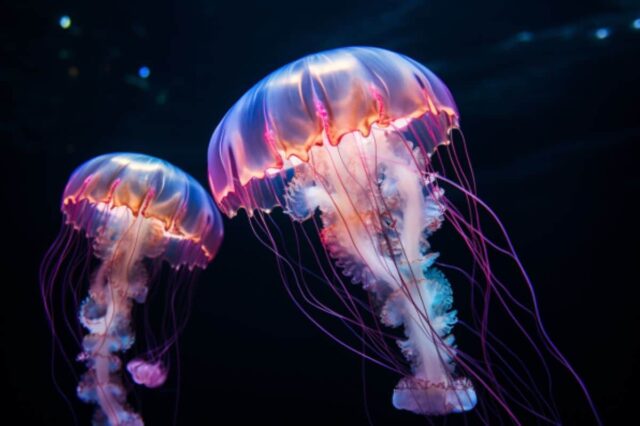
In a groundbreaking discovery, scientists have unlocked the secrets of how jellyfish, despite not having brains, exhibit complex autonomous movements. Here’s what the latest research reveals:
A Glimpse into the Jellyfish Mind
Even without a brain, the jellyfish, specifically the Clytia hemisphaerica, showcases intricate behaviors. This tiny species, measuring just about a centimeter in diameter, has become the focal point of this study. Its transparent body, simple genome, and roughly 10,000 neurons make it an ideal candidate for neural tracking.
Neural Organization: More Structured Than Anticipated
Contrary to what one might expect from an organism without a centralized brain, the jellyfish displays a high degree of structured neural organization. Their nervous systems, which evolved over 500 million years ago, are relatively simple. The neurons are organized in an umbrella-like network, mirroring the jellyfish’s body. These neurons are further segmented, akin to slices of a pie. Each tentacle of the jellyfish is connected to one of these slices.
The Feeding Process: A Neural Symphony
When a tentacle detects and captures prey, such as brine shrimp, the corresponding slice’s neurons activate in a specific sequence. This intricate process involves the tentacle moving the prey towards the jellyfish’s mouth. Astonishingly, 96% of the jellyfish observed exhibited this behavior, with 88% succeeding in their feeding attempt.
The Role of RFA+ Neurons
Researchers identified a specific type of neuron, the RFA+ neuron, as crucial for the feeding process. When these neurons were deleted, the jellyfish couldn’t transfer food from its tentacles to its mouth. However, other behaviors, like swimming, remained unaffected, indicating the presence of other neural controls.
Neural Coordination: A Complex Dance
The study also delved into how different parts of the jellyfish communicate. Even when the mouth was surgically removed, the jellyfish still attempted to transfer food. Similarly, even without tentacles, the presence of shrimp extracts triggered the mouth to turn towards the food source. This suggests that various behaviors are coordinated through distinct groups of neurons.
Key Takeaways:
- Jellyfish, particularly Clytia hemisphaerica, exhibit complex behaviors despite lacking a brain.
- Their neurons are organized in an umbrella-like structure, segmented similarly to pie slices.
- The RFA+ neurons play a pivotal role in the feeding process.
- Different behaviors are coordinated through distinct neuron groups.
This research not only sheds light on the incredible capabilities of jellyfish but also challenges our understanding of neural networks in simpler organisms. The findings have been published in the renowned journal, Cell.










